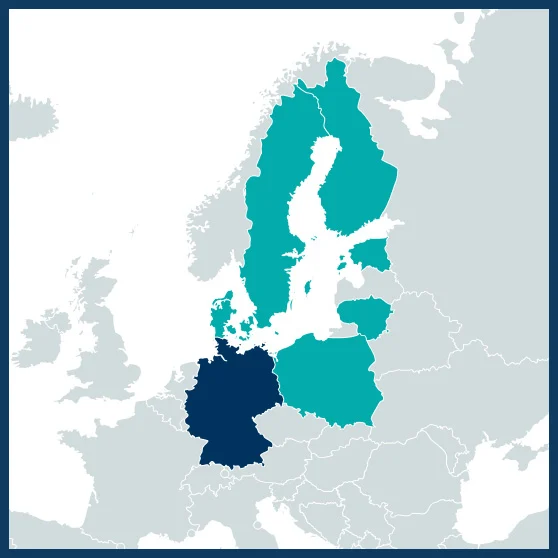01/04/2021 – 01/04/2024
€ 1,441,685
Matthias Labrenz
matthias.labrenz@io-warnemuende.de
Coordinator: Biological Oceanography – Leibniz Institute for Baltic Sea Research Warnemünde (IOW) – Rostock-Warnemuende – Germany
Hydrobiology, Estonian Centre for Limnology – Estonian University of Life Sciences – Estonia
Environmental and Marine Biology – Abo Akademi University – Abo/Turku – Finland Biology – University of Copenhagen – Helsingor – Denmark
Marine Evolutionary Ecology – GEOMAR Helmholtz-Zentrum für Ozeanforschung Kiel – Kiel – Germany
Marine Research Institute – Klaipeda University – Klaipeda – Lithuania
Fisheries Economics – National Marine Fisheries Research Institute – Gdynia – Poland
Gene Technology – KTH Royal Institute of Technology – Stockholm – Sweden

Vibrio – microbes that are part of the natural bacterioplankton in temperate marine waters – have in recent years flourished in the Baltic Sea, probably stimulated by elevated surface water temperatures. Several Vibrio species are human pathogens. It is hence of great concern that Vibrio-related wound infections and fatalities have increased dramatically along the Baltic coasts. Future climate change is predicted to escalate this problem, posing a significant threat to human health and the Baltic tourism industry. However, the projections do not yet take into account the influence of ‘ecosystem engineers’ such as mussels and macrophytes on Vibrio diversity and abundance. Recent data indicate that in some of the ‘ecosystem engineers’ habitats the abundance of pathogenic Vibrio spp. is reduced. However, climate change will also affect the structure and functioning of the ecosystem engineers, with as yet unknown consequences for the Vibrio populations in the Baltic Sea.
BaltVib aims to delineate the current and future Vibrio status, determine biotic and abiotic key factors regulating Vibrio prevalence, and identify nature-based solutions (NbS) to mitigate the problem. This opens up the option for NbS strategies to control pathogenic vibrios in the nearshore habitat where humans interact with the sea.
The main activities will be understanding Vibrio – ecosystem engineer relations in the past, indexing the current distribution, regulation and pathogenicity of Vibrio, making a projection of Vibrio – ecosystem engineer relations in the future. Further we will test the potential of underwater islands as an NbS to reduce pathogenic Vibrio spp.
National authorities of the partner countries with responsibility for public health, bathing water quality, Marine Strategy Framework Directive and Water Framework Directive will be actively included in the decision-making process during the project through means of an advisory board. Additionally, politicians, stakeholders and the general public will be actively engaged to foster understanding of the need to protect and restore the biodiversity of seagrass meadow habitats as potential biofilters to conserve or reach a good ecological status and protect human health. This will be achieved through a number of workshops, trainings, the provision of data and open web-GIS “BALTIC SEA ATLAS” maps and a website.
BaltVib’s goals will be achieved through interdisciplinary integration of marine, microbiological, molecular and socio-ecological expertise carried by partners from seven Baltic nations.